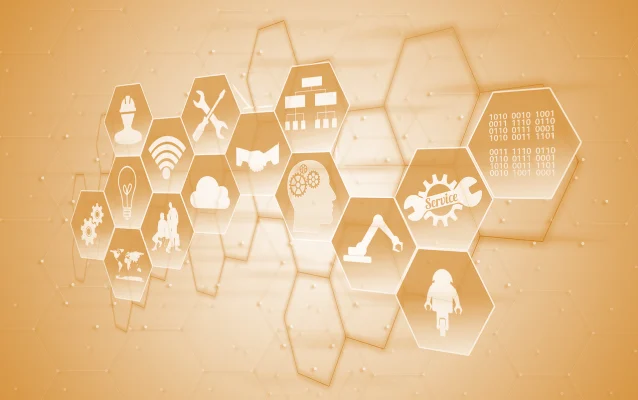With the advances in smart technology over the past decade, the demand for IoT devices with lower latency has only increased. Our homes are now both more interconnected and smarter than they ever have been. Likewise, businesses are in a constant battle to be first-movers, demanding a more efficient and interoperable IoT infrastructure.
The main issue, however, is all about power. Devices require a lot of power and that puts significant limits on the efficiency of an IoT network. WiFi, for instance, is ideal for IoT devices that require a lot of bandwidth and can be plugged into a socket, like a smart camera. Part of the issue is that running a power cable to each device on your network can be a major pain. It can be inconvenient (ugly and hurting WAF) to run a cable to the location of a given device. For healthcare devices and other wearable devices it is a requirement that they run on battery. This offers very few alternatives to solving their power issues. Accordingly, many people are not fans of the dynamic of constantly using power cords or worrying about batteries. This issue of the need to wire up certain IoT devices or face the constant need to change batteries across WiFi networks has given the wireless community food for thought.
With that in mind, we are going to break down the low-power wireless framework alternatives that are ideal for maximizing the functionality of domestic and corporate IoT networks.
The Current Protocol for Wireless Networking: IPv6 and 6LoWPAN
IPv6 (Internet Protocol version 6) is the modern standard of wireless network data transmission. In a nutshell, it gives internet-enabled devices their unique IP addresses needed to communicate with one another.
As a replacement for IPv4, IPv6 can create trillions of different IP address combinations. The invention of IPv6 was a response to fears in the wireless network community that we could eventually run out of IP addresses as we bought more and more devices.
6LoWPAN, which stands for ‘Internet Protocol version 6 over Low-power Wireless Area Network’, is essentially a compressed version of IPv6.
As a low-power wireless network alternative, every node of a 6LoWPAN protocol has its own IPv6 address. This means that devices can directly connect to the internet using open standard IoT protocols like TCP, HTTP, UDP, CoAP and MQTT.
Importantly, established big techs such as Apple and Google have already begun paving the way for 6LoWPAN to become the standard wireless networking protocol across its devices. Apple, for example, is implementing 6LoWPAN into their Apple TV boxes, indicating the start of a shift towards this low-power alternative.
Here are some low-power connection solutions.
Option 1: Bluetooth Low-Energy
Bluetooth Low-Energy (BLE) is a short-range option for connecting multiple devices in close proximity to one another.
This protocol is perfect for transferring smaller pieces of data. Its popularity as a low-power alternative for IoT networks has increased with the rise of wearable technology, like smartwatches. BLE is easily integrated with the majority of mobile technology on the market, making it the ideal choice for personal IoT application networks.
Crucially, version 4.2 of BLE makes it possible to use existing IP infrastructure to manage Bluetooth devices, making it easier to connect devices over the protocol. As a result, the deployment of basic BLE-equipped devices such as smartphones and laptops can be scaled with near limitless potential.
There is also a way to run IPv6 directly over BLE. BLE sets strict requirements for low power consumption and thus limits the allowed protocol overhead. 6LoWPAN standards provide useful functionality for reducing overhead, which is applied to BLE. This functionality consists of link-local IPv6 addresses and stateless IPv6 address autoconfiguration, Neighbor Discovery, and header compression. Fragmentation features from 6LoWPAN standards are not used due to BLE’s link-layer fragmentation support.
However, it has limitations in terms of bandwidth for transferring large files. If an installation of an IoT network for a business’ building is on the cards, therefore, a different low-power protocol is better suited.
Likewise, in terms of other low-power protocols like Thread, BLE protocols with an IPv6 mesh are less common. The reason that fewer BLE IPv6 deployments are found is for the most part, due to a lack of work on certain surroundings of the network. For Border Gateway Protocol, for example, there’s a lack of specification around how the behavior of the border nodes link between the different paths.
Option 2: Dot-Dot & Thread
Dot-Dot is an application layer that allows devices to connect to the internet quickly and efficiently. It finds a common language through which different applications can talk to one another when sending and receiving information.
Dot-Dot acts as a buffer between a given device in an IoT network and the other devices. Take a smart plug that wants to connect to the local network of a house. Dot-Dot manages the security of that connection and then communicates the capabilities of that device to the rest of the device network.
Likewise, Thread is a mesh network built on IPv6 which allows for direct, non-hierarchical connection between as many devices as possible. Thread-enabled devices can transmit and receive data instantly over their local network and in some cases, be accessed directly over the wider internet.
Thread uses 6LoWPAN, which is based on the use of a connecting router, called an edge router. Thread calls their edge routers Border Routers. 6LoWPAN’s mesh routing means that more nodes can communicate with one another, making the network more robust with the more devices that are added. Network routing can self-heal, lowering the risk of error and the need for human intervention.
Unlike other proprietary networks, 6LoWPAN, like any network with edge routers, does not maintain any application layer state, because such networks forward datagrams at the network layer. This means that 6LoWPAN remains unaware of application protocols and changes. This lowers the processing power burden on edge routers. It also means that Thread does not need to maintain an application layer. Thread states that multiple application layers can be supported, as long as they are low-bandwidth and are able to operate over IPv6.
Combining the Thread networking layer with a Dot-Dot application layer, devices made by different brands with completely different functionality can find a common language to communicate to each other, and give homes and businesses alike a wireless network of technology that works seamlessly together.
Option 3: WiFi HaLow
WiFi HaLow is the low-power amendment to the wireless network standard known as IEEE 802.11ah.
The main differences between WiFi HaLow and normal WiFi lie in the amount of energy each protocol consumes. WiFi HaLow is phenomenally energy efficient when it comes to IoT devices that are sensitive to power usage. Whereas WiFi-controlled devices are seen as having less optimal power consumption, WiFiHaLow is seen as the battery-friendly protocol alternative.
Likewise, HaLow has a longer range in terms of connectivity between IoT devices than say traditional WiFi. It is the first ever WiFi standard to run on the unlicensed sub-GHz band. And this means greater versatility for end users.
Finally, WiFi HaLow is an incredibly scalable standard in comparison with traditional WiFi. A single HaLow access point can connect up to 8,191 devices, which is four times that of a normal WiFi access point.
In a nutshell, it’s a leaner, meaner and more secure alternative protocol to WiFi as we’ve known it in the past.
Final Thought: Which is the Best Low Power Radio Protocol For Building A Wireless Network?
When it comes to low-power radio networks, there is a clear shift towards the 6LoWPAN protocol. It’s the light-weight version of IPv6 and is now being incorporated into many of Silicon Valley’s most popular tech devices.
Whether it is domestic or a corporate wireless network installation, networking layers that use 6LoWPAN are more resilient towards errors in communication.
Read Our Other Resources
We’ve also published a range of IoT resources for our community, including:
- Buying versus building an IoT platform, which discusses how to choose the best option for you.
- Our guide on how to Develop IoT Apps and what platforms you can use.
- A Comparison of IoT Protocols for Developers will help you find the perfect protocol for your device.
- Find the right microcontroller by reading our Complete Guide to Microcontrollers for IoT







